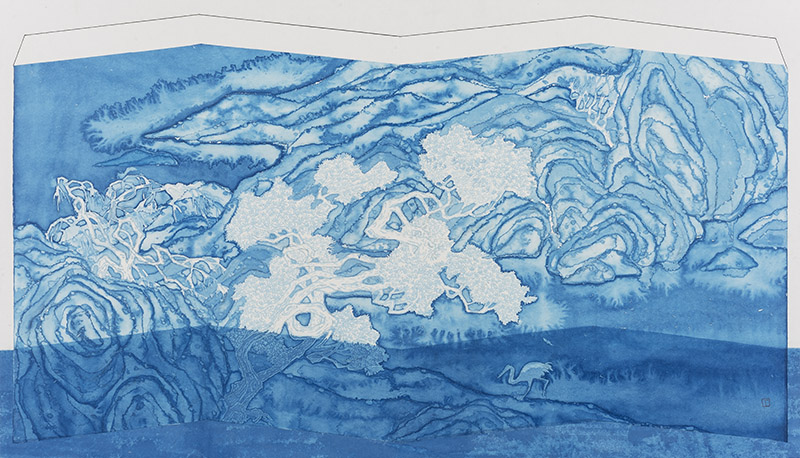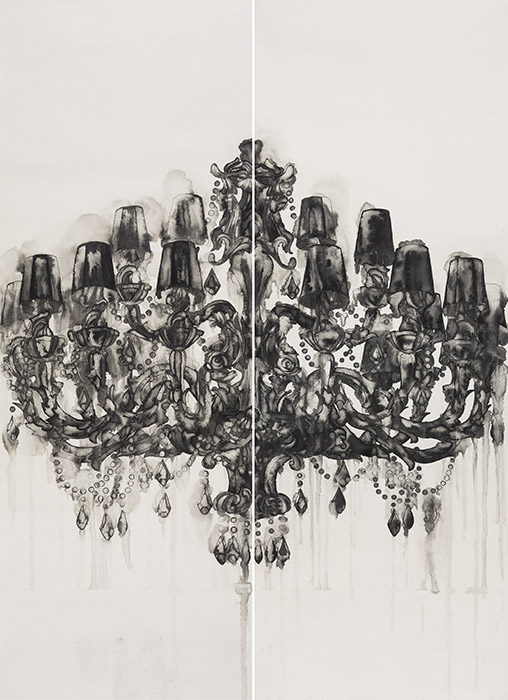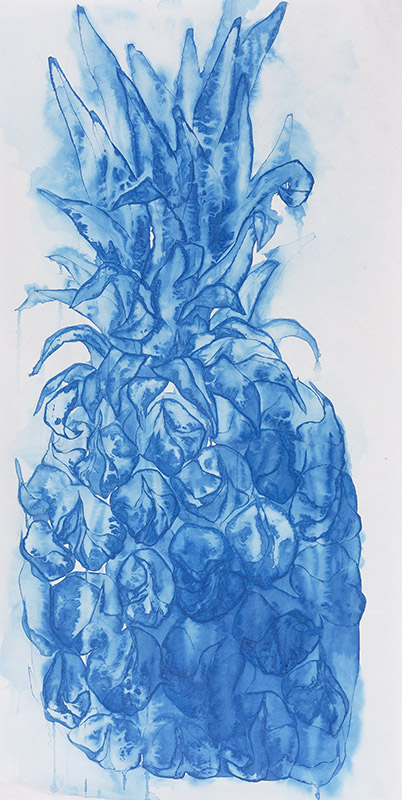
25 Aug A Vista in Blue – Li Tingting Solo Exhibition



“Distance” is frequently considered as the key element when it comes to modern aesthetics. Professor Edward Bullough of the University of Cambridge suggested that distance “appears to lie between our own self and its affections”, the theory was then disseminated by Zhu Guangqiang and widely applied by later generations.
Before Edward Bullough, when distance was brought up in a discussion regarding art, only the spatial distance and the temporal distance were considered. Whilst Bullough’s theory of taking psychical distance as the core of aesthetics offered a new debate to the art field. Russian formalism critic Viktor Shklovsky proposed a similar concept of “defamiliarisation”, presenting the audience with common things in an unfamiliar or strange way in order to enhance perception of the familiar.
One must keep such a distance when inspecting Li Tingting’s works. Despite the fact the artist’s use of traditional elements such as rice paper, ink and the boneless brush technique, Li Tinting has offered components that are unfamiliar to the viewer, challenging one’s perception of art. The unorthodox details in Li’s works include objects from the daily life and the techniques applied with the brushworks.
Li Tingting paints ordinary objects from domestic life, documenting furniture such as chandelier and sofa, as well as wine glasses and bowls, and items that only appear in specific season or festivities, such as ice cubes and rocking horses. These objects appear as individuals in Li’s paintings, and under some circumstances they are dramatically enlarged to inspire the viewer to contemplate on the existence of such objects.
The unusual take on domestic items in ink paintings is not the only controversy in Li Tingting’s works, the use of daring colours and her mastery handling of tonal gradation break away from the forms of ink that one is accustomed to. Li replaces the natural colours of vegetables, fruits and landscapes with pure colours, which have become her trademark. Her expertise in capturing the flow and the penetration of water also make her brushworks remarkably distinguishable. Professor Kuiyi Shen from the University of California San Diego who specialises in Asian Art History, Theory and Criticism has praised Li Tingting’s unique interpretation of ink painting and how her command of the colour blue accentuates the acuity of colours.
One does not only see the distance between the object and the techniques applied during the creational process of the paintings, but also Li’s intention of constructing a distance that the viewer may be accustomed to. The tonal gradation in Li’s landscapes is not formed in the conventional manner which one may normally expect, and the “blankness” which one would frequently find in traditional landscapes is replaced by the artist’s favoured blue. Furthermore, some of the paintings are combined with wooden structures to form installation works, challenging the stereotype of landscape paintings.
The various elements such as subject, technique, medium, size, colour and form included in the exhibition of “A Vista in Blue”, are to encourage the audience to break away from the norm they recognise. Through crisscrossing between the familiar and the unfamiliar, the spectators are inspired to be imaginative and see endless possibilities in art.